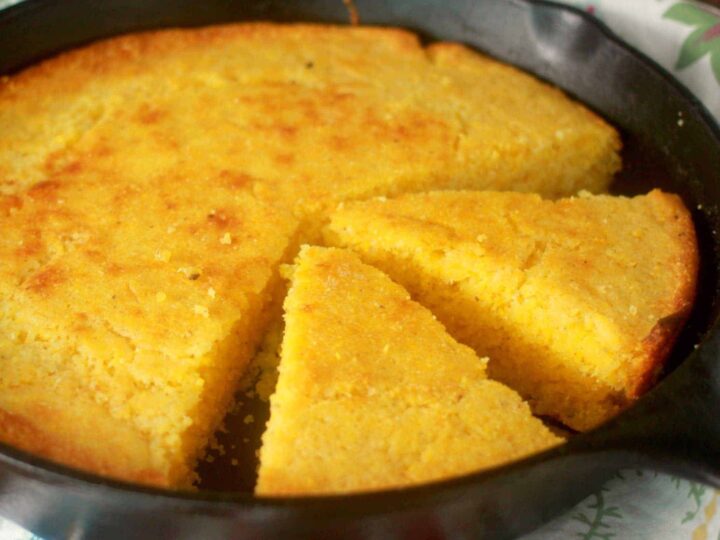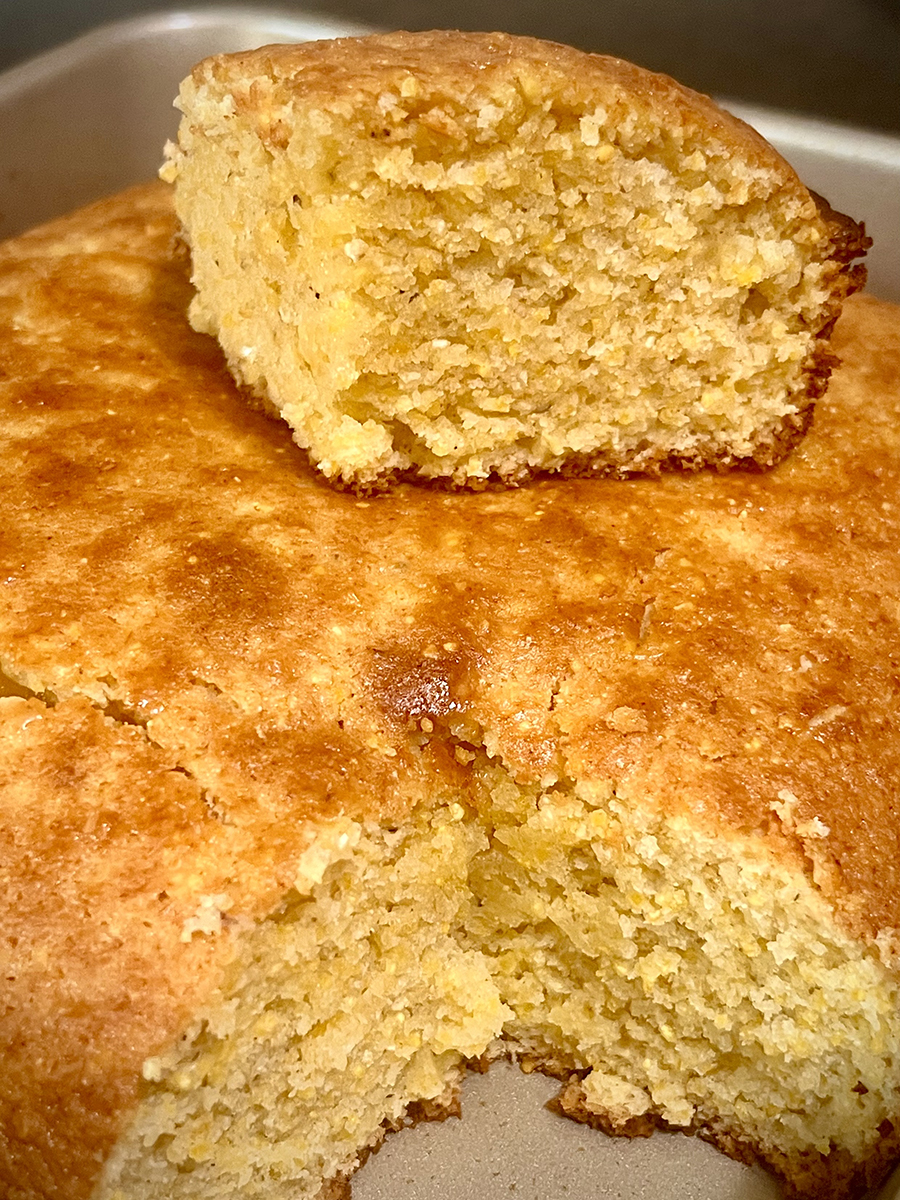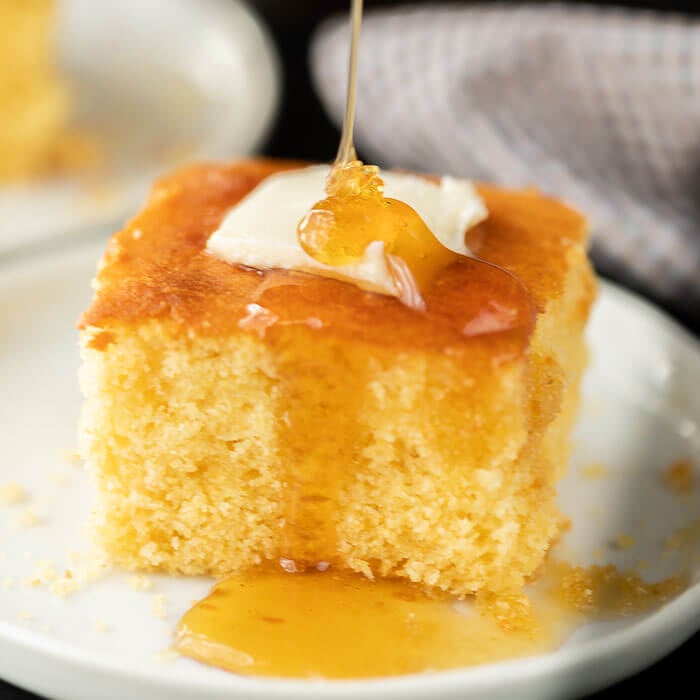The Golden Delight of Cornbread: A Timeless American Classic
Cornbread Recipe is a staple of American cuisine, particularly beloved in the Southern United States. With its golden hue, moist texture, and slightly sweet flavor, this humble bread has a history as rich and varied as its taste. Cornbread’s origins are rooted in Native American traditions, and it has been adapted over centuries to become a versatile dish that can be enjoyed in a multitude of ways. Whether served as a side dish at a family dinner, as a base for stuffing during Thanksgiving, or simply on its own with a pat of butter and a drizzle of honey, cornbread is a comfort food that brings warmth and nostalgia to the table.
The history of cornbread dates back long before the arrival of Europeans in the Americas. Indigenous peoples in North and Central America cultivated corn as a primary crop and used it to make a variety of dishes, including a type of flatbread made from ground cornmeal. When European settlers arrived, they adopted this practice, adapting it to their own culinary traditions. The result was a hybrid bread that used cornmeal as a primary ingredient, giving birth to the cornbread we know today. Unlike traditional wheat-based breads, cornbread has a crumbly texture and a distinct flavor that is earthy, sweet, and slightly nutty.
There are several regional variations of cornbread, each with its unique characteristics. The most well-known styles are the Southern-style cornbread and Northern-style cornbread. Southern cornbread is typically less sweet, often made with little or no sugar, and uses more cornmeal than flour, resulting in a denser, more crumbly texture. It is often cooked in a cast-iron skillet, which gives it a crispy, golden crust that is highly prized by cornbread enthusiasts. Buttermilk and bacon drippings are common ingredients in Southern cornbread, adding richness and depth of flavor.
Northern-style cornbread, on the other hand, is usually sweeter and lighter in texture. It often contains more flour than its Southern counterpart and is sometimes made with a mixture of cornmeal and flour. The use of sugar or other sweeteners like honey is more prevalent in this style, giving the bread a cake-like consistency. This version is often baked in a regular baking dish rather than a skillet and is enjoyed as a dessert or a sweet side dish.
Beyond these basic distinctions, there are numerous other variations of cornbread that reflect the diverse ways this dish has been embraced and adapted across different cultures and regions. Some versions incorporate additional ingredients like cheese, jalapeños, or corn kernels for extra flavor and texture. Mexican cornbread, for example, often includes fresh corn, cheese, and peppers, giving it a spicier, more complex flavor profile. In the Appalachian region, hot water cornbread is a popular variant made with boiling water and formed into patties before frying, resulting in a crisp, golden exterior and a soft, moist interior.

Cornbread is more than just a side dish; it has a deep cultural significance and has been a symbol of resilience and resourcefulness throughout history. During times of scarcity, when wheat flour was hard to come by, cornbread provided a reliable and filling alternative. It was a staple in the diet of enslaved people in the South and became a cornerstone of soul food, a cuisine rooted in the African American experience. Today, cornbread continues to be a beloved dish in Southern and African American cooking, often appearing on tables during family gatherings, holidays, and special occasions.
One of the most appealing aspects of cornbread is its versatility. It can be served in countless ways and pairs well with a wide variety of dishes. Traditionally, cornbread is a perfect accompaniment to hearty soups and stews, such as chili or gumbo, where its slightly sweet flavor balances the spiciness of the main dish. It also complements savory entrees like fried chicken, barbecue, and collard greens. Cornbread can be crumbled into a glass of milk or buttermilk for a quick, rustic meal known as “crumbled bread” or “cornbread and milk,” a practice common in rural areas of the South.
During the holiday season, cornbread plays a starring role in many Thanksgiving tables as the main ingredient in cornbread stuffing, a dish that combines crumbled cornbread with herbs, vegetables, and broth to create a savory, aromatic stuffing perfect for turkey. Leftover cornbread can be used in various ways, such as in bread puddings or even as a base for breakfast dishes like cornbread pancakes or cornbread French toast.
Baking cornbread is relatively simple, but there are a few tips to ensure the best results. First, using a well-seasoned cast-iron skillet is essential for achieving the characteristic crispy crust. Preheating the skillet in the oven before adding the batter helps to create a golden, crunchy edge that contrasts beautifully with the soft, moist interior. Additionally, using buttermilk instead of regular milk adds a slight tanginess and helps to keep the bread tender. For those who prefer a sweeter cornbread, adding a bit of sugar or honey to the batter can enhance the flavor without overwhelming the natural sweetness of the cornmeal.
In a world of constantly evolving food trends, cornbread remains a cherished classic that has stood the test of time. Its simple ingredients and straightforward preparation make it an accessible dish for home cooks of all skill levels, while its rich history and cultural significance give it a special place in the heart of American cuisine. Whether you’re baking a batch for a holiday feast or simply enjoying a warm slice with butter and honey, cornbread is a delicious reminder of the power of good food to nourish both body and soul.




